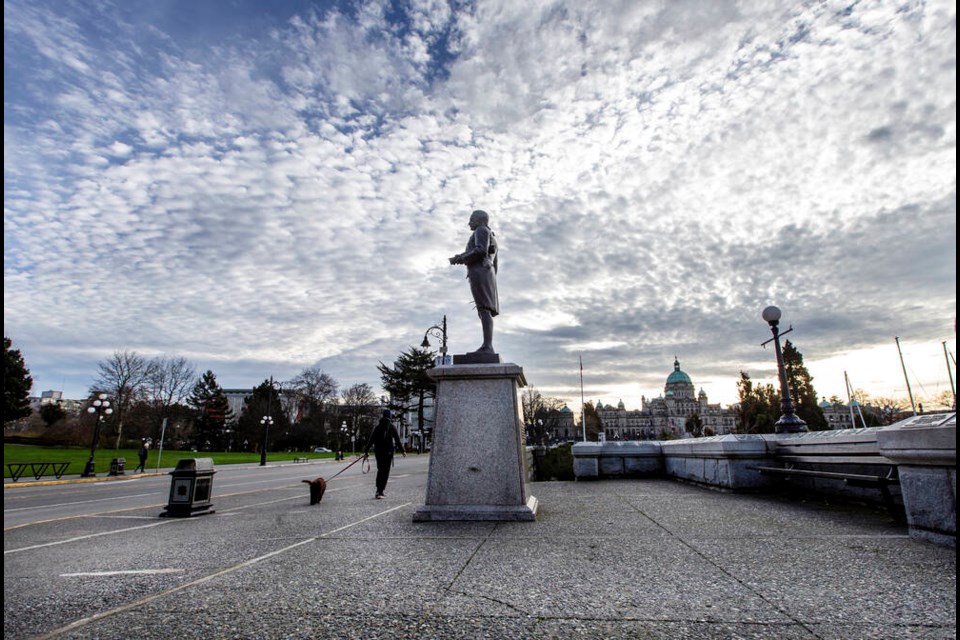The Greater Victoria Harbour Authority is taking its first steps to remove an empty pedestal on the Inner Harbour Causeway that used to support a Capt. James Cook statue, torn down and thrown into the ocean during Canada Day protests last year.
The fibreglass statue was broken into pieces when a group slipped a rope around its neck on July 1, 2021, and pulled it down, tossing it into the Inner Harbour and leaving half of one leg and a foot atop a pedestal smeared with red handprints.
It cannot be repaired and the harbour authority does not intend to replace it, said CEO Ian Robertson. Instead, they will remove the pedestal and two accompanying plaques while working with the Songhees and Esquimalt Nations to determine what should stand in its place.
On Thursday, Victoria councillors approved a heritage alteration permit request from the harbour authority, which allows for the removal of the six-foot-tall granite pedestal from the heritage-designated property owned by the harbour authority. The statue was not considered to have heritage value.
Songhees Chief Ron Sam said he is not working directly on the consultation about what should replace the statue and was not aware of the status of the work. Esquimalt Chief Robert Thomas could not be reached.
Robertson said there’s no timeline yet for the pedestal’s removal.
Before it was torn down, the statue was due to be discussed at a meeting of the harbour authority’s First Nations economic development committee.
“As part of our overall placemaking of the Inner Harbour on our properties, we were looking at not just that particular statue, but the entire area, and it was on our radar. And now with the statue being torn down, that’s kind of prompted us to move this process along,” Robertson said.
The remaining pieces of the statue are in the harbour authority’s maintenance shop and will eventually be disposed of in an environmentally friendly process, he said.
The statue, a copy of a bronze original that stands at Cook’s home port of Whitby, England, was installed in 1976 to mark the 200th anniversary of the voyage that brought Cook to the coast of Vancouver Island.
Its toppling on Canada Day followed the discovery of unmarked graves near three former residential schools, which sparked renewed anger about the harm done to Indigenous communities by colonization and the government-sanctioned institutions, which took generations of Indigenous children from their families in an effort to strip them of their language and culture.
Cook, a British explorer, made the first European contact with the eastern coastline of Australia and the Hawaiian Islands and sailed along the west coast of Canada in 1778, anchoring in Nootka Sound. Monuments to him have been vandalized elsewhere, including Hawaii, where Cook was killed in a fight in 1779.
In recent years, statues of Cook in Melbourne, Australia, have been targeted annually on Jan. 26, the country’s national day. Two monuments were splashed with red paint in Melbourne on Wednesday, when Australians celebrated Australia Day.



